22 Children Who Turned Parental Embarrassment Into Stand-Up Comedy

How many functioning razor blades have you thrown out because they got oxidated and rusty? And how much usable toilet paper have you wasted because you didn’t know any better? Luckily, that can change if you follow some simple tips.
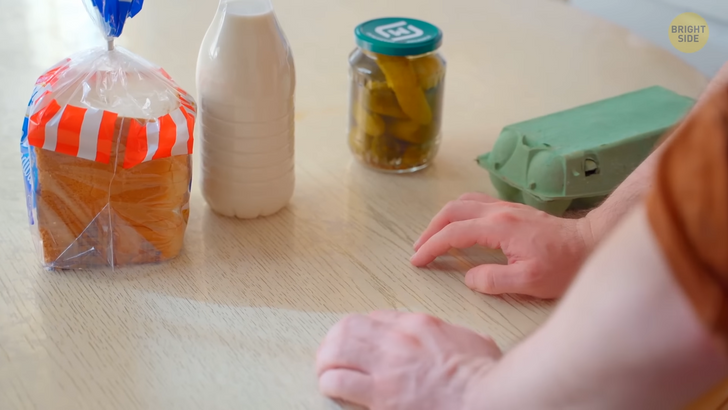
Now, let’s say you’ve just arrived back from the grocery store. The bags are full of fresh produce and refrigerated items. If you are a type A person, you probably look at your empty fridge and start throwing your groceries inside without any type of organizational system. Now, if you are a type B, maybe you stop for a moment to assess the situation and try to figure out the best way to distribute your food. No matter which scenario you fit into, I bet you’ve been storing some essential day-to-day items in a very wrong way.
Eggs. We’re used to them coming beautifully placed in their little carton packages, ready to be picked one by one and transferred to the egg compartment located on the fridge’s door. But have you ever stopped to wonder whether that is really the best place to store your eggs after all? Turns out it’s not the ideal place for them!
The refrigerator door is one of the warmest parts of a fridge, as it is being constantly opened and closed, compromising the eggs’ overall quality. According to food-safety experts, there is such a thing as the correct order to store food inside the fridge. Refrigeration plays a large role in keeping your food safe. The first rule of keeping food fresh is to always check the temperature in the places where you store it.
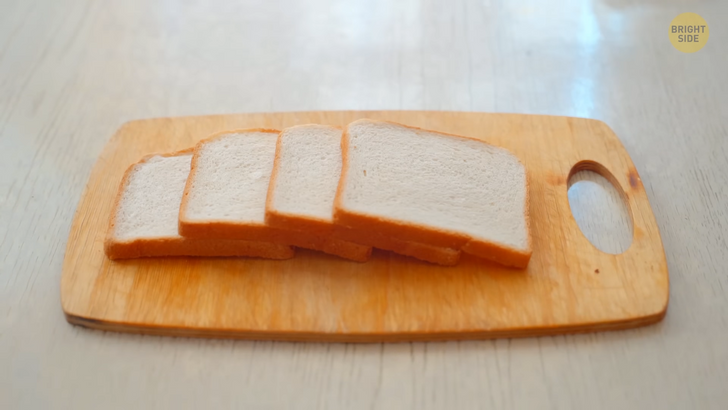
The temperature inside kitchen cabinets should be between 50 degrees F and 70 degrees F. And when it comes to the fridge, it must be around 37 degrees F, while the freezer should mark nothing over 0 degrees F.
Store your refrigerated foods by cooking temperature, from the lowest temperature on the upper shelves to the highest cooking temperature on the bottom shelves. Keep ready-to-eat foods that need little to no cooking at all on the first fridge shelf. Then, organize the rest of your shelves by cooking temperature. In this scenario, eggs would go on the third or fourth shelf as they cook between 145 and 155 degrees F.
Now, bread. If you’re a carb eater, you’ve certainly lost multiple packages of bread before. They are notoriously known for their superfast expiring dates and the colonies of mold that appear from what seems to be thin air and force us to throw away otherwise good slices of bread. Here’s some good news: there is a way to keep your loaf of bread fresh for weeks and even months. And contrary to eggs and milk, the fridge is not the way to go for that to happen.
Instead, separate the slices of bread and place them in a plastic bag. Now, close the bag removing all air from inside of it. Be sure to leave the bag as free from the air as possible. That is what will guarantee its safe storage. Now, place the airtight bags of plastic into a freezer, and voilà. Your bread can last up to 3 months that way!
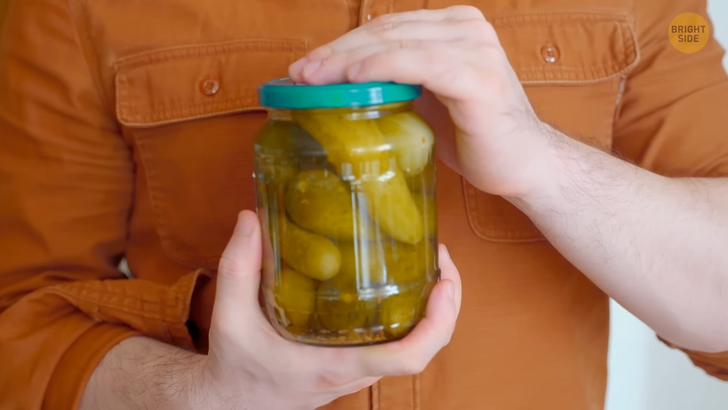
What about pickles and other condiment food jars? In order to make them last longer, store them upside down as that will prevent mold growth. And yes, you can keep these ones on your fridge’s door. There’s no problem with that.
Before we leave the kitchen, try this out. Whenever you buy a new non-stick saucepan, season it before actually cooking anything on it. First, you’ll need oil. Rub on the edges of your pan and place it inside the stove for about 60 seconds. Let it absorb the heat, then remove the pan from the stove and let it cool down. Wipe off the excess oil, and there you have it!
This way, the oil will fill in any small gaps or little pores in the pan, smoothing down the surface until it’s all even. You can now expose the pan to high temperatures, and it won’t get damaged.
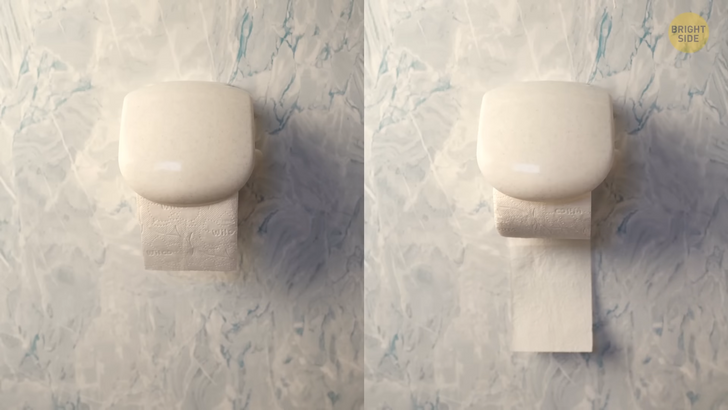
Now, let’s move on to bathroom items. Toilet paper is easily one of the most wasted household items. Even if we notice it, we don’t really do much to change the way we go about it. Apart from the classic ’over-under’ discussion of how we should place toilet paper, there is a less known must-do habit that we often ignore.
Just to fill you in, in case you’ve been oblivious to this until now, toilet-paper science has long debated whether the correct way to hang the roll is with the loose end draped over the top or with the loose end hanging inside next to the wall. And as much as I bet many here already know the answer, can I have a drum roll, please. Well, you got it right if you guessed “with the loose end draped over the top.” It is so for the simple reason that ’over’ provides easier access to the loose hanging end of the paper and minimizes the risk of knuckle-on-wall germ gathering.
But now, toilet paper ingenuity doesn’t end here. Did you know that to reduce toilet paper waste, you should squish your rolls before placing them on the bathroom hanger? By squishing, I mean laying them down horizontally and pressing them down with your hand until their aspheric center has turned into an oval, almost flattened shape.
Yes, you should aim at flattening your toilet paper, and no, I haven’t lost my mind. That happened long ago. The purpose of this practice is to make it harder for toilet paper to rotate.
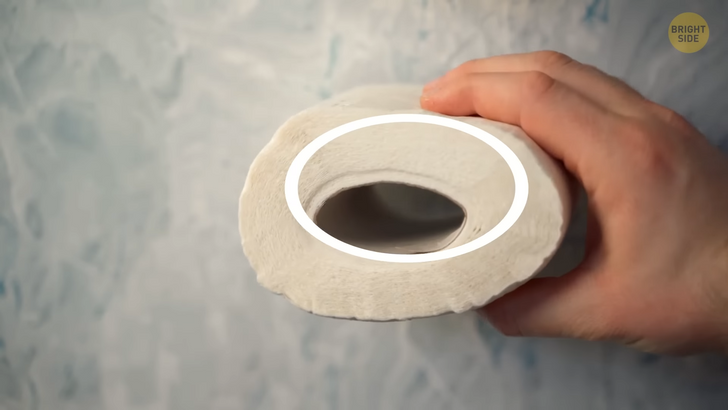
When you hang it in its usual more circular form, it rotates too easily. This way, it lets us — the toilet paper users — effortlessly enjoy it in an unlimited fashion. Depending on the force we use to pull the paper, we will end up with twice or thrice the amount of paper we needed in the first place.
And sure, we could just roll the excess back. But I bet most of us here don’t do that and end up just wasting huge chunks of paper. You get the idea, right? Oval-shaped paper equals more controlled rotation and, thus, less waste of toilet paper.
Then, we have razor blades. If you’re the person who never stops buying razor blades because the last one you bought five days ago is already rusty from your bathroom’s humidity, maybe you’ll want to listen to this one. It’s not true that razor blades have such a short life expectancy. They can and should last longer in our bathroom cupboards — we just need to know how to handle them.
You don’t have to be an expert to know that a warm and moist environment doesn’t go well with razor blades’ steel. So for starters, you should always dry them after using them, especially if your last usage was in the shower. Then, keep them in a cool and dry spot — maybe even out of the bathroom. They will surely last longer this way.
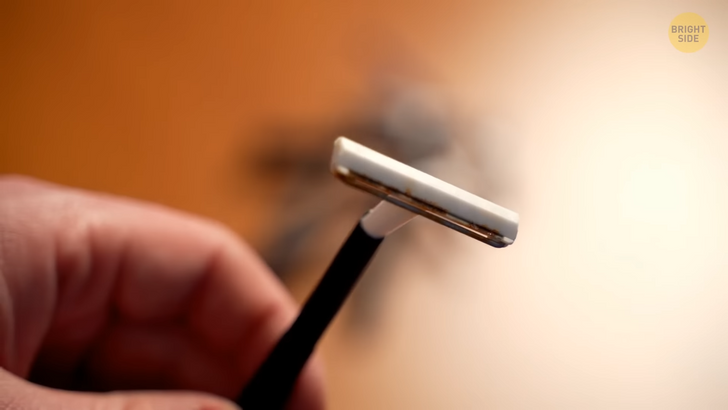
Using a rusty blade can be especially bad for your skin, contributing to bacterial or fungal infection, so that’s a big no-no for leaving the blade face-down in a puddle of shower water. Do keep that in mind. After that delicious shower, some people may head back to their bedrooms. If it’s near bedtime, they might even decide to light that aesthetically pleasant nightstand candle and enjoy the most out of its pleasing white musk and warm vanilla aroma.
But if your candle has been burning too quickly, try these tricks out and see if it’ll last longer. You can trim your candle’s wick multiple times and keep it as far away from water and moist as possible. It will guarantee that your candle’s wax stays firm and steady and thus, continues to burn slower for a longer period of time.
A little extra tip regarding candles: never throw away their jars once you’ve finally burnt them out. Suppose you made it to the end of your candle, congrats! Boil some water, wash the recipient with detergent and warm water, clean the remaining wax out of it and reuse the jar! You can plant a succulent, store art supplies, or use it for anything your heart desires. And there you have it.
Little changes in habits can go a long way in your daily life. Be sure to check them out and let us know in the comments below which one was your favorite to try out. Me, I’m going to make candles out of toilet paper. We’ll see how that goes...











